 Thank you to everyone who has helped with information
Thank you to everyone who has helped with information

 For much of the Cold War and beyond, within naval circles, the Cos.Mo.S CE2F was the prototypical two-man ‘chariot’. Based on tactics employed with devastating effect in WW2, it provided a means for a navy to neutralize a much more powerful foe before they’d even left port.
For much of the Cold War and beyond, within naval circles, the Cos.Mo.S CE2F was the prototypical two-man ‘chariot’. Based on tactics employed with devastating effect in WW2, it provided a means for a navy to neutralize a much more powerful foe before they’d even left port.

Colombian CE2F X60.
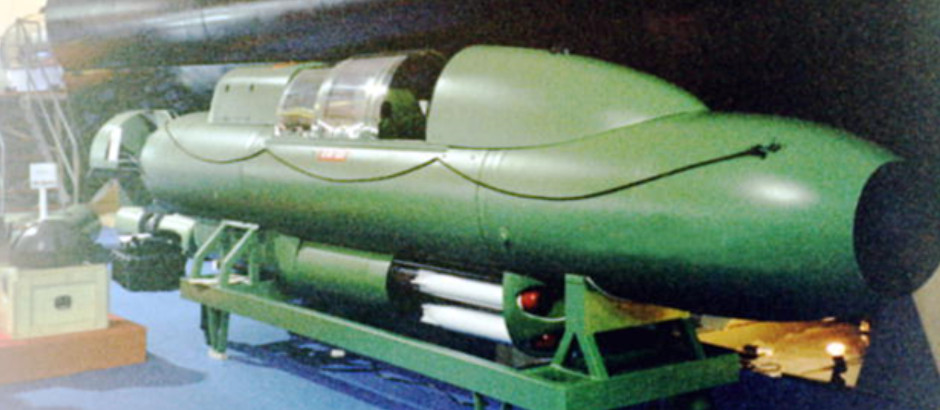
The final vesion of the CE2F was the CE2F X100T, seen at an arms show in Malaysia.
 Following World War Two several Italian frogmen (Naval Special Forces) set up businesses to capitalize on the technology and reputation of the Italian Navy’s wartime Decima MAS unit. One was Ing. Pucciarini who created Cos.Mo.S (fully ‘Costruzione Motoscafi Sottomarani s.a.s’ but commonly written ‘Cosmos’) in Livorno, Italy. Even though the firm has since ceased trading, it is probably the most famous military wet-sub / midget sub manufacturer in the world.
Following World War Two several Italian frogmen (Naval Special Forces) set up businesses to capitalize on the technology and reputation of the Italian Navy’s wartime Decima MAS unit. One was Ing. Pucciarini who created Cos.Mo.S (fully ‘Costruzione Motoscafi Sottomarani s.a.s’ but commonly written ‘Cosmos’) in Livorno, Italy. Even though the firm has since ceased trading, it is probably the most famous military wet-sub / midget sub manufacturer in the world.
THE book on Special Forces subs Covert Shores 2nd Edition. A world history of naval Special Forces, their missions and their specialist vehicles. SEALs, SBS, COMSUBIN, Sh-13, Spetsnaz, Kampfschwimmers, Commando Hubert, 4RR and many more.
Check it out on Amazon
During the war Italian Special Forces unit Decima MAS (10th Flotilla, aka X-MAS) pioneered various diving and submersible technologies and used them to devastating effect against the Allies. The main underwater vehicle was the SLC (Siluro a Lunga Corsa which means long running torpedo’, and not the common mistake of ‘Siluro a Lenta Corsa’ which means slow running torpedo, and is incorrect). This was described as a ‘human torpedo’ and popularly known as the 'maiale' (pig). Two frogmen sat astride a torpedo body with a massive mine carried on the nose. They would creep into an enemy port and attach the mine to the target using clamps. Suspended between the bilge keels, the mine was large enough to sink a capital ship. The SLC was used on several successful attacks on Allied shipping in the Mediterranean including the disabling of two battleships. The effectiveness of these tactics led the British to copy the design, developing the Chariot. Following the SLC, Decima MAS developed the more advanced SSB (Siluro San Bartolomeo) with the crew sitting inside the craft. The SSB never saw combat because it arrived too late, but was the model which influenced the post-war development of SDVs. Pucciarini was himself an SSB pilot.

Seahorse I / II
The Ippocampo (Sea Horse) predates the formal establishment of the company, having been built and tested in 1950/51. Inventor Ing. Pucciarini wanted to market maiale (as they were then known, SDV in current terminology) as tourist and sports vehicles. The design was based on the SSB design concepts but without a warhead nose. Overall the craft was much shorter than the SSB with a relatively larger portion of the hull dedicated to crew accommodation. Unlike the SSB and equivalent British Chariot Mk.II which attempted to minimize the size of the crew compartment, the Seahorse had a large open cockpit for easy access.
Initially Pucciarini employed a small 25hp petrol (/oil) engine rather than an electric motor because in the 1950s electric motors and batteries were expensive and uncommon in the civilian market; his underwater idea was to create a world of underwater “cars” and the most available source of energy at the time was petrol. This did however increase operational complexity because it required an air hose to the surface. This used a buoy to both mark the subs position and keep the inlet above water. This arrangement made the craft unsuitable for clandestine military operation and limited operating depth. Soon battery powered versions were being built.
With a prospective market in USA, a second prototype was sent to the States, where it was named Seahorse.
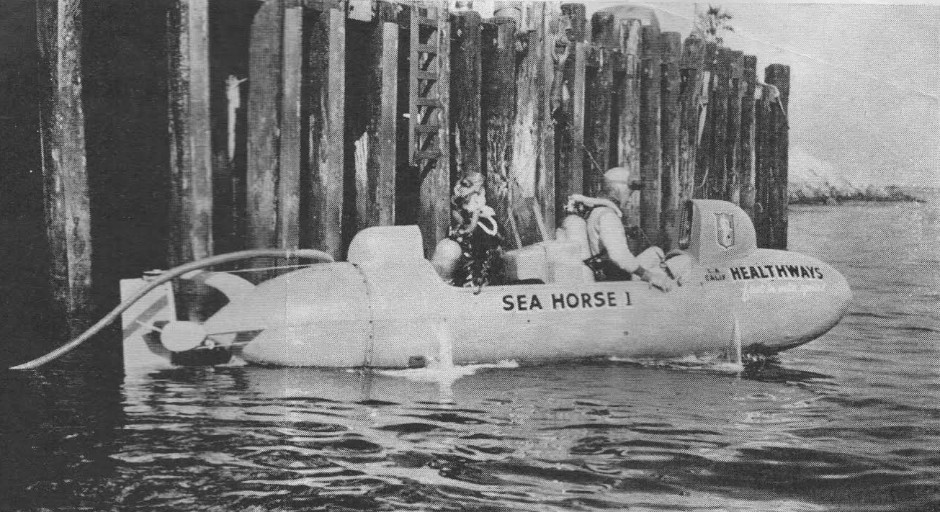
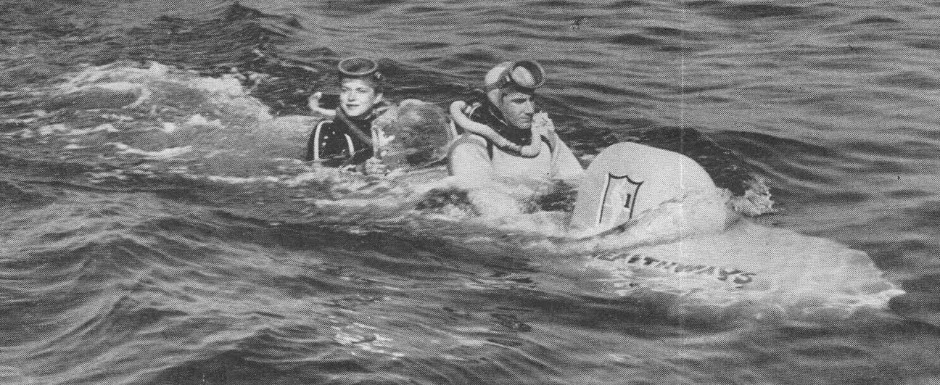
The gasoline engine Seahorse-I being demonstrated in America, early 1950s. Note the floating snorkel tube emerging from the stern fuselage, and also the Perspex watershield on the ballast tank protecting the passenger. Photos sourced via Dr John Bevan, Historical Diving Society.
Early models were marketed as the Sea Shark or Nautilus with optional electric power, but shifted to Seahorse-II with the electrically powered production version. Aside from being electrically powered, the Sea Shark and subsequent models differed from the original by being constructed from fiberglass (GRP – Glass Reinforced Plastic). The overall hull form was essentially similar but the batteries were added in a sealed cylinder in the floor.Later models were marketed as the Ippo. In the US they were marketed by SCUBA diving company Healthways. Initially the gas engine version was shown but soon the electric 'Seahorse-II' was made available. By now the family was being offered to both civilian and military customers, but was never adopted in its home country.
The Seahorse soon came to the attention of the US Navy’s Underwater Demolition Teams (UDT) who purchased examples from Healthways from the late 1950s. Later in the mid-60s a formal US Navy order was raised for a batch of Seahorse-IIs direct from Cos.Mo.S. Although only ever a training craft, the Seahorse-II was a vital part of the US Navy’s SDV heritage.
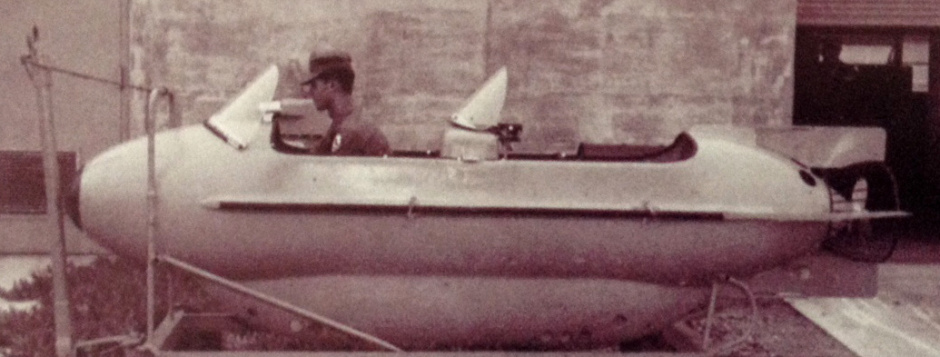
Seahorse-II in US Navy service. Note the non-standard watershields
TRAS BX4 & TRASS-III
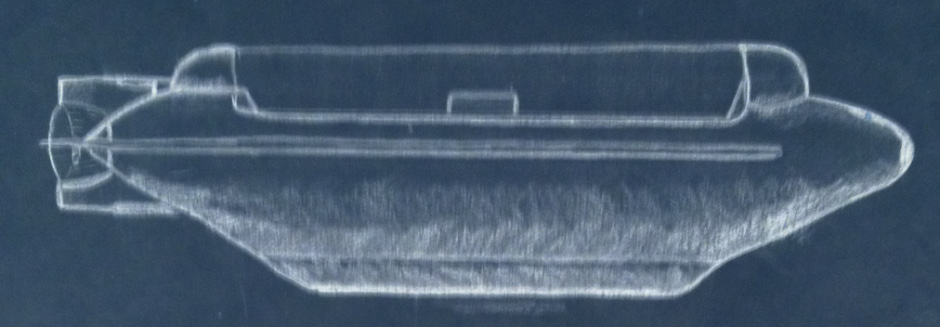
Original sketch from Cos.Mo.S factsheets, late 1960s
The TRAS BX4 was a four-man version of the Seahorse-II. Designed for the Pakistani Navy (who were a major Cos.Mo.S customer), the type was also adopted by the US Navy UDT and SEALs as the TRASS-III.

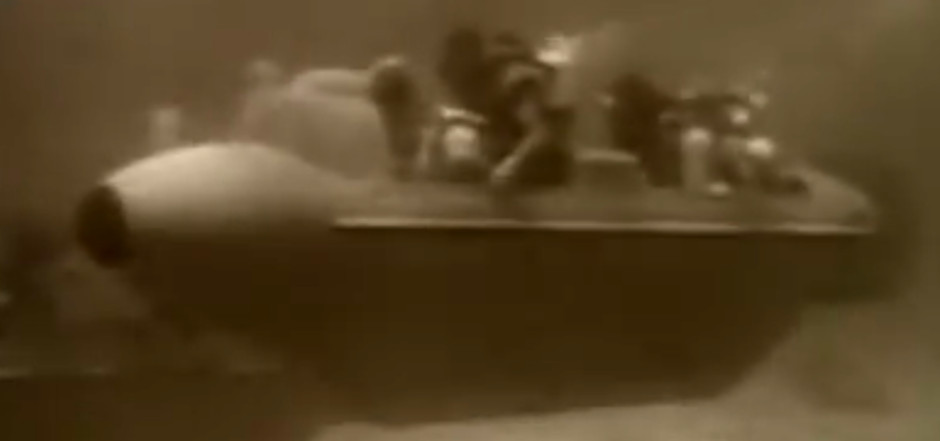
Specifications
Length: 5.45m
Beam: 0.8m
Height: 1.5m
Weight: 0.9t
Speed: 3.5kt max
Endurance: 40nm at crising speed
Batteries: 96V Lead-Acid (Silver-Zinc offered)
Maximum depth: 30m
Crew: 4
Onboard air: 2 HP air flasks (1200L)
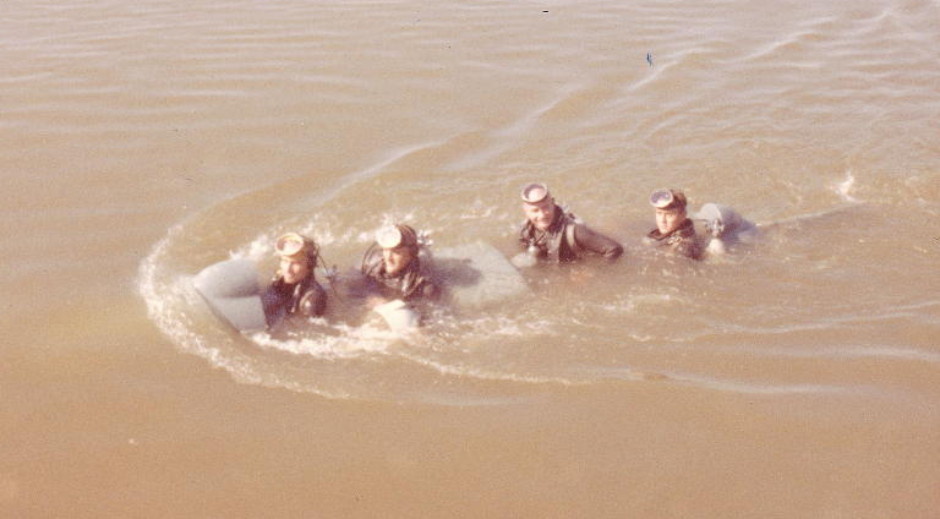
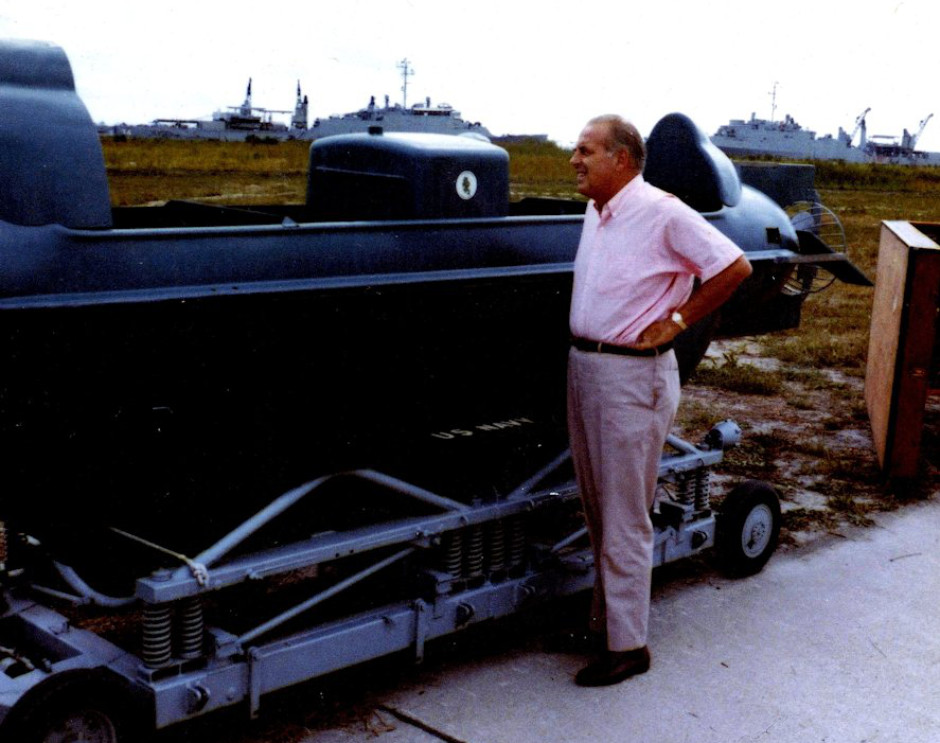
Images from www.sealtwo.org
CE2F Chariot

Original sketch from Cos.Mo.S factsheets, late 1960s
The CE2F two-man chariot was a return to the wartime routes. Designed from the outset as a mean for attacking enemy warships in harbor, the CE2F was constructed of tough steel and had a much larger battery than the Seahorse and TRAS, giving it longer endurance. Everything was military spec with (then) modern technology complementing wartime experience.
Like the Seahorse, there was initially a petrol engine version, the CT2F, for training purposes. Only Taiwan and Egypt appear to have purchased this model and they had the electric CE2F model in their inventory for actual missions. Gasoline vehicles were useful in training because of their simple maintenance procedures. You could refill the tank and carry on with training. Batteries on the other hand had to be totally discharged before recharging, which took considerable time and had to be done out of the water.

Taiwanese CE2F (left) and CT2F (right). Note the snorkel on te CT2F. Tawan was the first customer of the CE2F and only customer of the CT2F
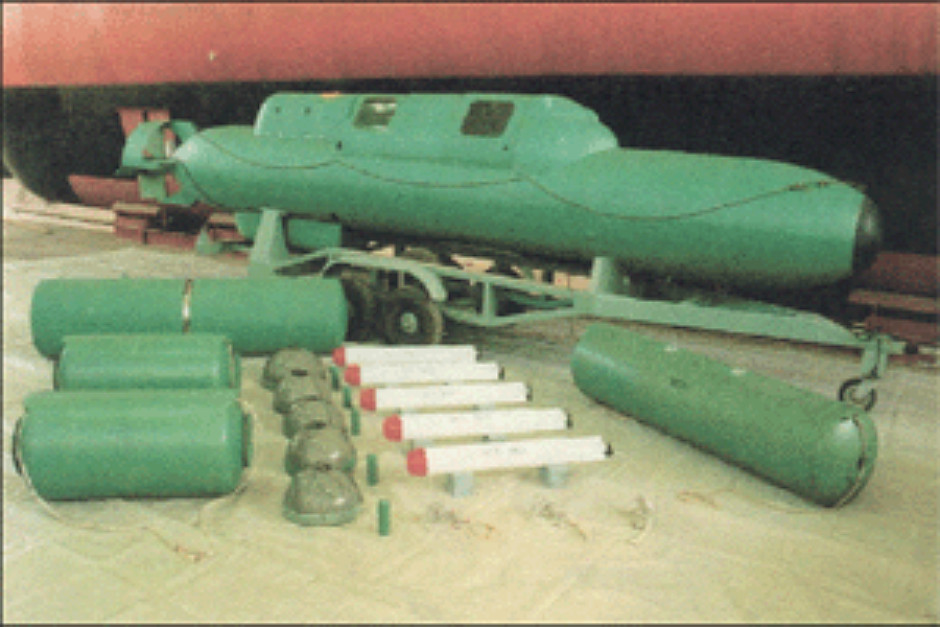
Cos.Mo.S CE2F X100 with mines and mini-torpedoes displayed
The CE2F was produced in several variants over forty years (early 1960s to early 2000) and exported to several countries. Provisional table:
Taiwan - CT2F (2 units, 1960), CE2F/X30 (5 units, 1960/61)
Greece - CE2F/X60 (reported 4 units, late 1970s}
Colombia - CE2F/X60
India - CE2F/X60 (6 units, 1980) and CE2F/X100 (6+ units)
Pakistan - CE2F/X30 (/60 /100)
Argentina - CE2F/X60, maybe upgraded to X100 standard.
Egypt - CE2F
South Korea - CE2F/X100
Philippines - CE2F/X60
Turkey - TBC
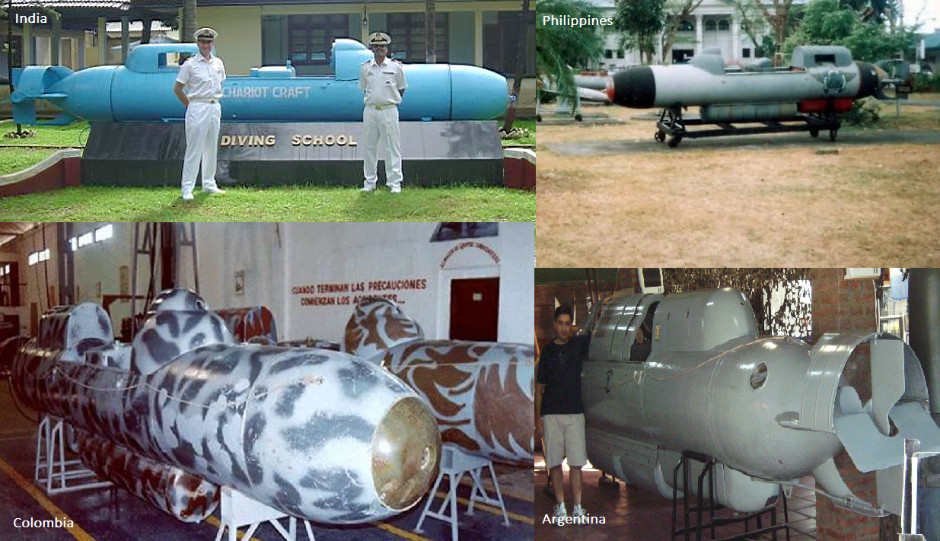
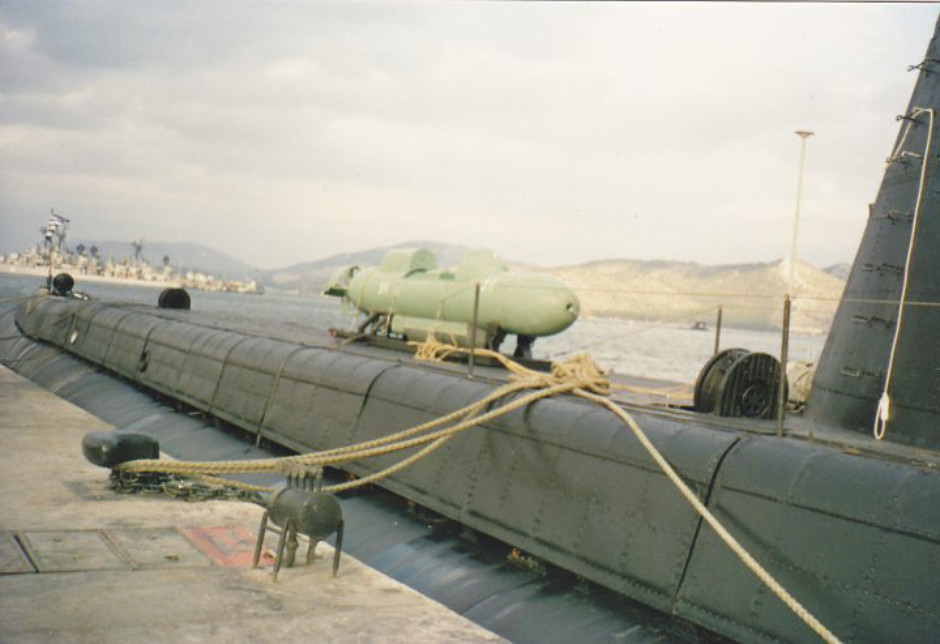
Hellenic Navy CE2F-X30 on the back of the Tench class/Guppy III submarine, Katsonis (S-115). Image from Naval Analyses
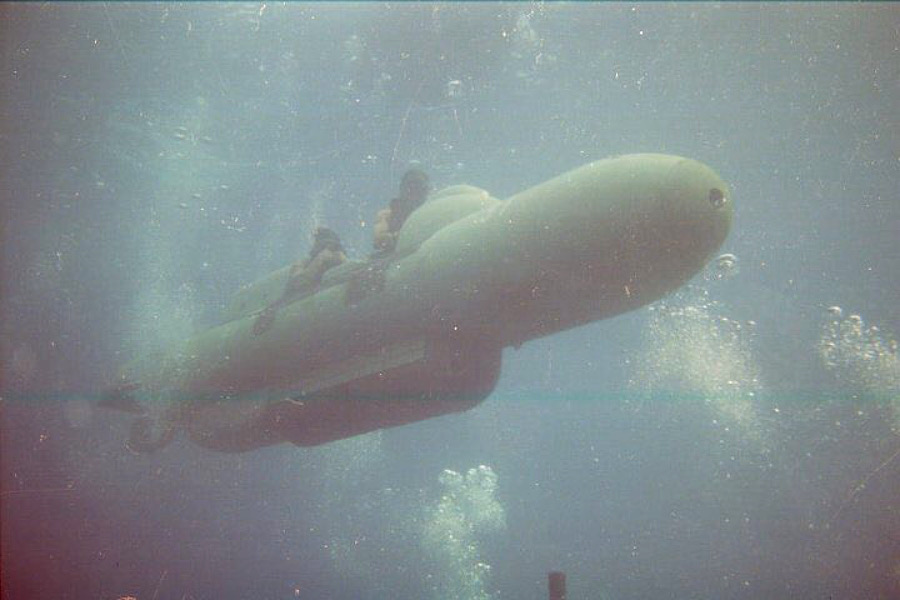
Hellenic Navy CE2F-X30 lifting off from the back of the Tench class/Guppy III submarine, Katsonis (S-115). Image from Naval Analyses
Armament consisting of limpet mines carried in a locker over the aft fuselage or lager charges carried under the cockpit. It was also marketed with small 'micro-torpedoes' carried in a belly-pan beneath the cockpit, although it is unclear if these were tested. The /X100T version was the most advanced type marketed showing the final evolution of the design.
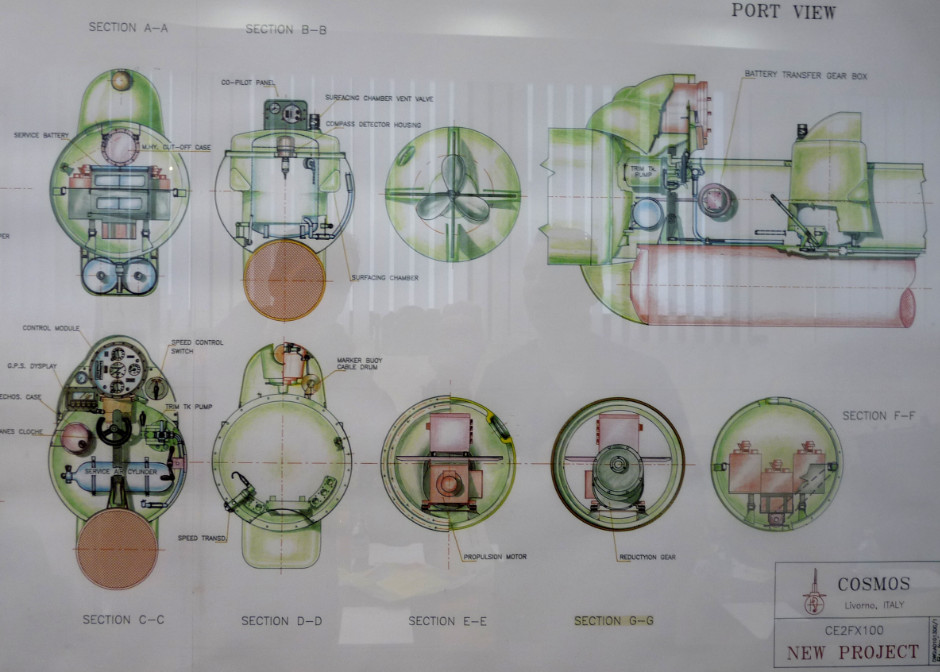
Although the type was iteratively improved, the final CE2F X100 design was essentially similar to the original CE2F
CE2F Specifications (original model)
Length: 6m
Beam: 0.8m
Height: 1.35m
Weight: 0.9t
Speed: 4.5kt max, 3.3kt cruising
Endurance: 60nm at crising speed
Batteries: 144V Lead-Acid (Silver-Zinc offered)
Maximum depth: 30m
Crew: 2
Payload: 320kg mine
Onboard air: 4 HP air flasks (14,000L)
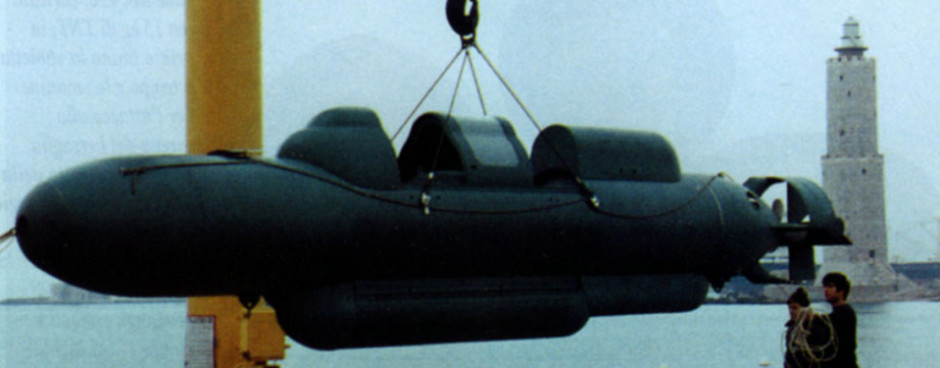
CE2F chariot being lifted ashore.
CE3F Chariot
A three-man derivative of the CE2F, this type is only known to have been supplied to South Korea where it complemented earlier CE2F deliveries. It is possible that all or some of the construction took place locally. The craft is possibly also known as the X-1 SDV. Relatively little is known about this type but it is easily recognized by the lattice cover over the perspex canopies.

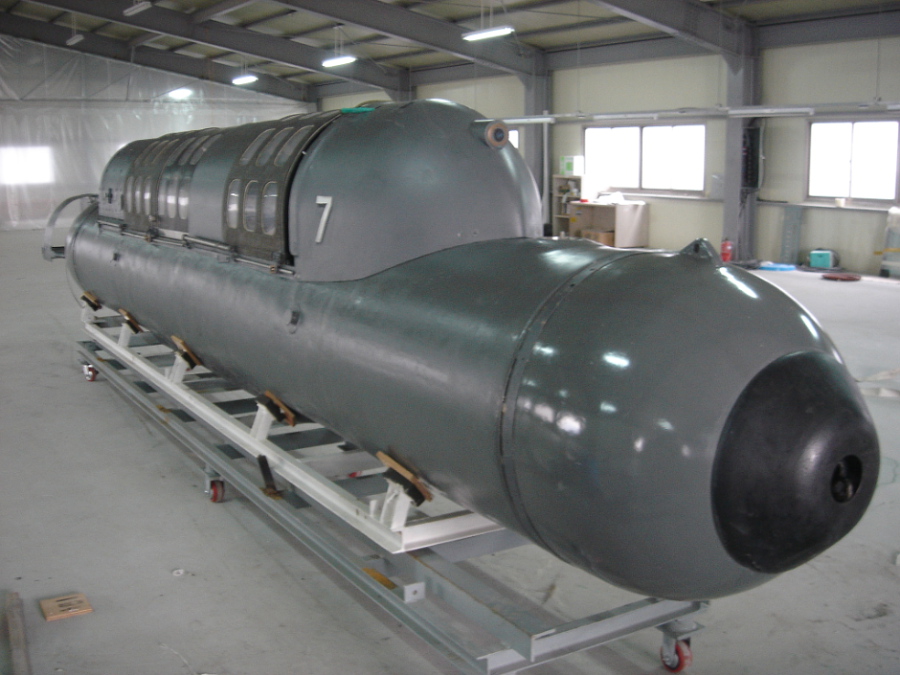
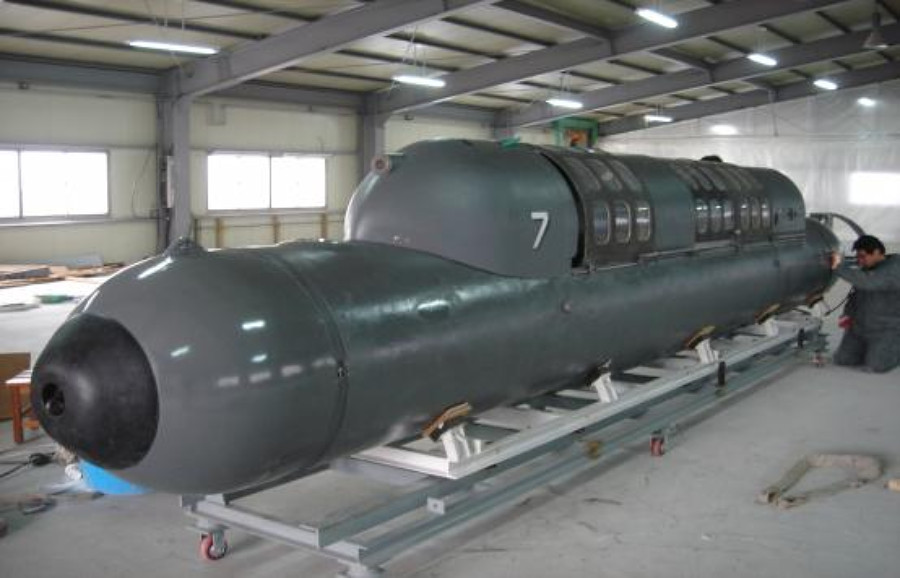
CE3F Specification
Length: 8.1m (versus 7.6m for CE2F)
Hull Diameter: 0.80m (same as CE2F)
Height: 1.5m (same as CE2F)
Displacement: 3,100kg
Operating depth: 30m
Speed: 5kts (max), 3.5kts (cruise)
Range(Cruise Speed): TBC (35-45nm)
Crew: 3(2 Divers)
Control Mode: GPS. OAS, Echo Sounder, Elec. compass for Navigation Platform Control, Way point Platform Situation, Memo, Comms


CE4F 4-man SDV project
The CE4F was designed for the Turkish Navy's SAT (Su Altı Taarruz) Special Forces who a history of using Cos.Mo.S submersibles. The new craft had to be non-magnetic with a relatively up to date electronics fit including internal navigation, obstacle avoidance sonar, autopilot and folding optronics mast.

CE4F Specification
Length: 8.55m (28ft)
Beam: 1.422m (4.6ft)
Height: 1.475m (4.6ft)
Displacement: 4.05 tons submerged, 3.85 tons surfaced
Speed: 7.5 kt max, 6 kt cruising
Operating depth: 60m (180ft)
Max depth: 100m (300ft)
Range: 30 nm
Crew: 4 swimmers
Armament/payload: 1 large mine or stores container up to 820kg. 8 x 124mm mini-torpedoes.
Sensors: Optronics mast, INS (internal navigation system), autopilot, OAS (obstacle avoidance sonar), multi-function buoy.
Main article:  Cos.Mo.S CE4F
Cos.Mo.S CE4F
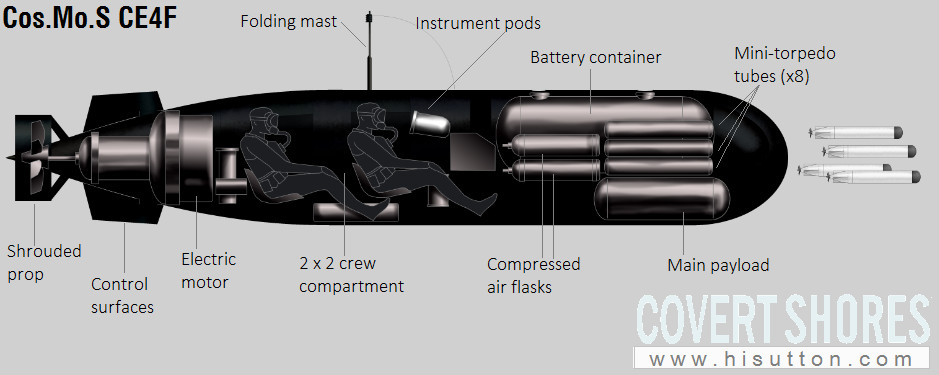
CE6F
Unbuilt lengthened CE4F for six frogmen.
A note about the end of Cos.Mo.S
Despite the firm's fame it is quite difficult for amateur researchers to put an authoritative timeline of versions together. The company was generous with sales material but secretive about customers and had several reported orders turn sour for one reason or another, resulting in much misreporting of operators. Added to this many of its customers received extensive upgrades to their vehicles, both by the manufacturer and as local modifications. Therefore two vehicles with the same version designation but operating with different countries may look quite different, and two vehicles of different models but different state of upgrade can look virtually identical.
Amid the secretive and misreported sales history of the company it's common for the sales record of Cos.Mo.S to be somewhat overestimated, although the total vehicles easily exceeded 100.

Cos.Mo.S chariots were often sold together with the company’s midget submarines. Here a Colombian Navy CE2F Chariot rendezvous with an SX-506 submarine.
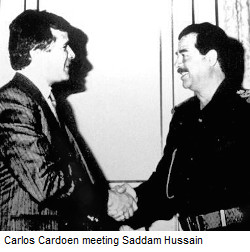 In the mid-1980s Ing Pucciarini sought retirement and the firm was eventually sold to infamous Chilean arms dealer Carlos Cardoen. In the late 1980s Cos.Mo.S had been negotiating a substantial sale of subs to Iraq. With the end of the Iran-Iraq war this stalled, made further difficult for Saddam Hussein's rapid fall-out with the West and Gulf War 1. Cardoen was not deterred and the deal morphed into the infamous "Oil-for-Food Program " scandal. Unbelievably Cos.Mo.S was trying to secretly supply Saddam Hussein with midget subs and was about to sell the entire company to the Iraqis. Eventually in the early 2000's the Italian Government stopped the Iraqi deal and, combined with other sour deals, the company defaulted. Cardoen was subject to an international arrest warrant but evaded capture.
In the mid-1980s Ing Pucciarini sought retirement and the firm was eventually sold to infamous Chilean arms dealer Carlos Cardoen. In the late 1980s Cos.Mo.S had been negotiating a substantial sale of subs to Iraq. With the end of the Iran-Iraq war this stalled, made further difficult for Saddam Hussein's rapid fall-out with the West and Gulf War 1. Cardoen was not deterred and the deal morphed into the infamous "Oil-for-Food Program " scandal. Unbelievably Cos.Mo.S was trying to secretly supply Saddam Hussein with midget subs and was about to sell the entire company to the Iraqis. Eventually in the early 2000's the Italian Government stopped the Iraqi deal and, combined with other sour deals, the company defaulted. Cardoen was subject to an international arrest warrant but evaded capture.
The company's reputation has been soiled, but the reputation of their vehicles has not. They are generally speaking very well designed, simple to operate and maintain, and most of all fit for purpose. There are very popular among operators. The unsavory demise of Cos.Mo.S has however opened the way for a number of new small/wet-sub manufacturers to fill the void, with several of the new players building directly on the Cos.Mo.S foundation.
Contrary to popular perception, Italian naval special forces have never operated Cos.Mo.S wet-subs.
Today Cos.Mo.S SDV (and midget sub) designs live on, offered by Italian firm Drass 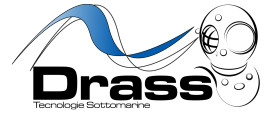
Related articles

 Cos.Mo.S Nessie Fast SDV submersible boat
Cos.Mo.S Nessie Fast SDV submersible boat

 Cos.Mo.S CE4F 4-man SDV
Cos.Mo.S CE4F 4-man SDV

 Vogo 'Chariot' SDVs (SDV-300, SDV-340...)
Vogo 'Chariot' SDVs (SDV-300, SDV-340...)

 COMSUBIN's submersible boat
COMSUBIN's submersible boat

 Polish Blotniak SDV
Polish Blotniak SDV


 EMT FWS-1 to -5 Barracuda SDVs
EMT FWS-1 to -5 Barracuda SDVs


